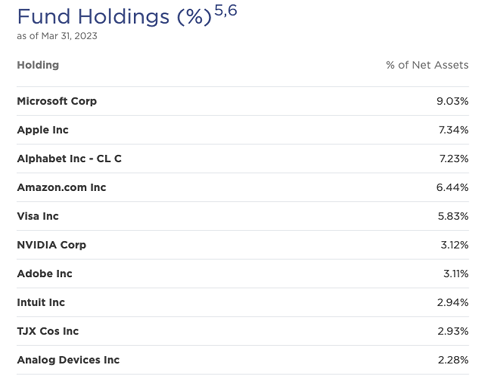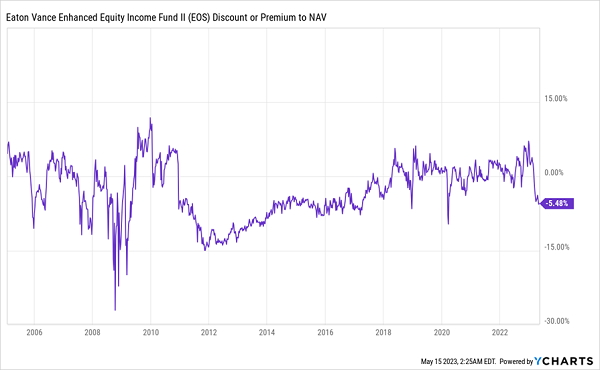You just can’t argue with the power of index investing, right?
After all, index funds boast ultra-low fees and simply track the market. And since stocks return about 7% per year on average, you should do well in the long run. Vanguard, founded back in 1975 on this very idea, built a massive firm (current assets under management: $7.2 trillion) on it.
And to be honest, for many folks, index funds do work. The company’s Vanguard S&P 500 ETF (NYSE:VOO) is a go-to in the space, along with rival Select Sector SPDRs’ SPDR® S&P 500 (NYSE:SPY). (Though I always prefer VOO due to its lower fees; when you’re simply tracking the index, fees matter a lot.) And VOO investors have done well.
VOO Soars Since Inception
VOO also caught a break from the fact that it launched in 2010, when stocks were in recovery mode following the 2008/’09 financial crisis. As a result, it’s delivered a bit over 12% per year on average, much more than the stock market’s average long-term return.
But we closed-end fund (CEF) investors know we can do better—not only giving ourselves a great shot at beating the benchmark (many CEFs from across the economy, including those that hold stocks, bonds, preferred stocks, REITs, you name it, have done so) but getting most, if not all, of our returns as dividends.
This is why we’ll always stick with our CEFs and their 7%, 8% and often over 10% dividends.
Check out how a diversified portfolio of three CEFs has beaten VOO since the index fund’s launch in 2010: the Columbia Seligman Premium Technology Growth Fund (STK), in orange below; the BlackRock (NYSE:BLK) Health Sciences Trust (BME), in blue; and the Eaton (NYSE:ETN) Vance Enhanced Equity Income Fund II (EOS), in green:
3-Fund CEF Portfolio Outruns VOO 
Note that this chart includes dividends. Since CEFs are income vehicles (STK, BME and EOS yield 6.4%, 6.2% and 8.4%, respectively), it’s important to look at CEF charts with dividends included, lest you get a skewed picture of their performance.
VOO, for its part, yields just 1.6%. That limits the amount of your profits you can invest in other assets without having to sell VOO units to do so—and getting into the (ultimately money-losing) game of successfully timing those sales. Since the three CEFs above yield just under 7% on average, you’re getting your profits in cash you can use to reinvest elsewhere or, if you’d rather live off your dividends, pay your bills.
That flexibility is one of the best things about CEFs. But let’s talk about that green line in the chart above, which has soared above the rest. That’s EOS, run by a company that’s microscopic compared to Vanguard: Eaton Vance. While the firm manages an impressive $475 billion, that’s still peanuts compared to Vanguard’s $7.2 trillion.
So how did this smaller management firm beat VOO?

Source: Eaton Vance
As you can see above, EOS now holds many stocks that were beaten down in 2022—Microsoft (NASDAQ:MSFT), Apple (NASDAQ:AAPL) and Alphabet (NASDAQ:GOOGL) among them. These three firms are also at the forefront of AI development.
EOS has a record of finding trends in the market and investing in them while still keeping their portfolios in large-cap US firms with strong cash flows. It’s why EOS has been attracting more attention for years, regularly trading at premiums to net asset value (NAV), until recently:
EOS Goes on Sale
Above we can see how, in the years following the dot-com collapse and the 2008/’09 financial crisis, EOS’s market pricing varied between small- to mid-sized premiums and deep discounts, with the discount growing to over 20% during the Great Recession.
In the 2010s, as the stock market started acting more rationally, EOS slowly attracted more attention, causing its discount to NAV to dwindle. But last year’s selloff has resulted in a widening of the discount that still hasn’t closed, even though EOS’s portfolio has been soaring in 2023. That discount will likely narrow again, though, building on the CEF’s 577% return since VOO’s inception—and giving EOS investors future profits on top of their 8.4% income stream.
Disclosure: Brett Owens and Michael Foster are contrarian income investors who look for undervalued stocks/funds across the U.S. markets. Click here to learn how to profit from their strategies in the latest report, "7 Great Dividend Growth Stocks for a Secure Retirement."
